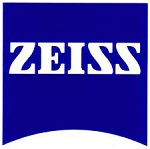In recent years, ZEISS has redefined the way 3D X-ray tomography measurements are performed in the laboratory with its groundbreaking ZEISS Xradia Ultra and Xradia Versa product families. By combining synchrotron-inspired optics and acquisition methodologies, these X-ray microscopes (XRM) crossed many of the traditional barriers that restrict lab-based computed tomography, providing performance equivalent to beamline instruments.
ZEISS has now extended its range of lab X-ray imaging instruments with an advanced micro-computed tomography (microCT) system called ZEISS Xradia Context microCT. This instrument will expand the offering with high throughput imaging, and full context, large field of view, whilst ZEISS Xradia Ultra and Xradia Versa X-ray microscopes will continue to address complex 3D imaging issues, especially when high-resolution requirements are important. ZEISS Xradia Context microCT will allow users to image both small and large objects, addressing the wide range of computed tomography applications with a foundation built on the high data quality and high performance for which ZEISS Xradia has been known.
A robust stage and flexible software controlled source/detector positioning enables users to image heavy (25 kg), large, and tall samples in their full 3D context, or increase geometric magnification with small samples for sub-micron resolution. With a high pixel density detector (six megapixels), users can resolve fine detail even within comparatively large imaging volumes (up to 140 x 165 mm field of view with stitching). Users benefit from:
- Fast exposure and data reconstruction times, including automated reconstruction
- Rapid sample mounting and alignment and a streamlined acquisition workflow due to the easy-to-use Scout-and-Scan control system
- In situ options to conduct 4D experiments
- Established usability and image quality – based on same platform as well-regarded ZEISS Xradia Versa series, including a selection of high purity X-ray filters and sophisticated acquisition control algorithms for optimized stability
- An optional autoloader for automated handling and sequential scanning of up to 14 samples

ZEISS Xradia Context microCT offers full context, large field of view, and high throughput imaging
Serving a Wide Range of Applications
ZEISS Xradia Context microCT offers a variety of applications ranging from academic research through to industrial inspection and process development:
- Characterize cracks, porosity, or other details in structural and raw materials including additive manufactured parts, heterogeneous rock types, composites, concrete, protective coatings, or mineralized tissue.
- Achieve full context and non-destructive 3D data of large intact devices, like electronic components and functioning batteries, large raw materials samples, for example, whole cores and biological specimens.
- Perform 4D evolutionary studies, through In situ sample manipulation or ex situ treatment, to understand phenomena like material deformation, corrosion, electrochemical cycling, or fluid flow.
- Explore a wide range of life science samples from single bones to whole organisms for non-destructive analysis of internal structure and localization of regions for further analysis or imaging.

3D scan and virtual cross section through a lithium ion battery cathode. This cathode was extracted from a cycled battery, and shows damage in the electrode particles as well as current collector. Sample courtesy of: Prof. D. U. Sauer and Prof. E. Figgemeier, ISEA, RWTH Aachen University.

A small sample of fiber composite scanned at high resolution with ZEISS Xradia Context microCT. This composite contains both carbon and glass fibers in a polymer matrix, which are resolved with high contrast.
Ready to Grow with User Needs
Assessing the development of laboratory X-ray technology, ZEISS surpassed the conventional barriers existing in the lab X-ray imaging market with its ZEISS Xradia Ultra and Xradia Versa XRM product series. ZEISS Xradia Ultra created a completely different operating space with spatial resolution as low as 50 nm, providing researchers the opportunity to inspect interior structures which earlier can be accessed only with destructive serial sectioning methods combined with electron microscopy. With ZEISS Xradia Versa, new Resolution at a Distance (RaaD) technology paved the way for maintaining sub-micron, high resolution imaging conditions even at greater source to sample working distances, considerably expanding the operating space for high performance data acquisition on large samples, within demanding In situ environments, or with sophisticated imaging modalities like diffraction contrast or phase contrast tomography.
With newly offered modules, functionality, and upgrade options to meet customer’s evolving needs, ZEISS continues to extend the capabilities of its X-ray imaging products in the field. Now, ZEISS Xradia Context is part of this family and inherits this same commitment to extendibility which ensures that customers’ initial investment is protected well in the future. With increasing demand for high performance, ZEISS Xradia Context is the only microCT that can be transformed in the field to a ZEISS Xradia Versa X-ray microscope, gaining complete access to the advanced functionality and high performance for which the ZEISS Versa series has become popular.

This information has been sourced, reviewed and adapted from materials provided by Carl Zeiss Microscopy GmbH.
For more information on this source, please visit Carl Zeiss Microscopy GmbH.